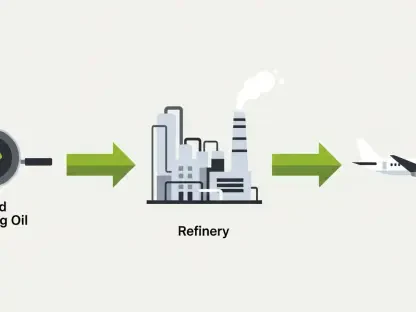In an era where power demand surges to unprecedented levels, the utility industry confronts significant challenges, particularly with a forecasted 50% rise in electricity consumption by 2050 in the United States, driven by factors such as the proliferation of electric vehicles and an increase in data center operations. This scenario necessitates a pivotal shift towards modernizing electrical infrastructure to cater to rising demands efficiently and reliably. Enter smart digital substations—a key element for realizing a robust, self-healing grid envisioned by The National Electrical Manufacturers Association (NEMA) through its newly rolled-out standards.
Industry Overview and Significance
The current power utility industry thrives in an intricate ecosystem. As electricity demand burgeons, utilities and equipment manufacturers explore innovative solutions to modernize aging grid infrastructures. The sector is significantly shaped by trends such as the electrification of transportation and the advent of data-driven technologies. Key players like NEMA bring order to this dynamic landscape by rolling out standards that serve as blueprints for utilities, streamlining adoption processes for digital substations. Regulations within the sector play a critical role, influencing technological adoptions, investment strategies, and operational practices, all while ensuring a sustainable and secure energy future.
Industry Trends and Market Dynamics
Emerging Technologies and Market Drivers
The utility sector witnesses a surge in technologies that redefine operational paradigms, from automated restoration systems to advanced grid sensors. Often driven by the need for increased resilience and efficiency, these technologies catalyze innovations that, once adopted, create new market opportunities. As consumption patterns evolve, consumers demand smarter solutions that accommodate renewable energy sources and offer real-time data insights—a transformation that presents both opportunities and challenges for utility providers.
Market Data and Growth Projections
Recent data reveals a marked uptick in infrastructure investments as utilities prioritize resilience and cybersecurity. The U.S. Energy Information Administration reports a significant increase in expenditures on grid infrastructure over recent decades. Of particular note is the dramatic rise in distribution substation investments—a trend bolstered by growing demand and regulatory structures advocating for more robust systems. Projections based on current data suggest continued growth as utilities adapt to changing landscapes and technologies, fostering an environment conducive to innovation and expansion.
Challenges and Solutions in the Utility Sector
Technological integration poses formidable challenges for utilities wrestling with complex systems and diverse vendor technologies. Coupled with regulatory scrutiny and market volatility, these challenges demand strategic solutions. NEMA’s standards aim to function as a guide, helping utilities deploy digital substations more effectively while addressing interoperability issues. Critical approaches involve leveraging standardized methodologies to streamline processes, manage investment justifications, and engage regulatory bodies effectively, ultimately leading to smarter, integrated grid systems.
Regulatory Developments and Their Impact
In a landscape characterized by stringent regulations, utilities must navigate complex legal frameworks that critically impact their operational and investment strategies. Compliance with existing regulations is paramount, with security measures demanding constant attention amid rising cybersecurity threats. As regulatory landscapes evolve, utilities stand poised to adjust practices, ensuring adherence while optimizing efficiency. New standards from NEMA provide utilities with the strategic tools needed to align their infrastructural investments with regulatory expectations, thereby securing regulatory endorsement.
Future Outlook and Emerging Opportunities
Looking forward, the utility sector is primed for transformational changes driven by emerging technologies that promise to disrupt traditional models. Opportunities abound for utilities that embrace cutting-edge solutions like artificial intelligence and machine learning for asset management and analytics. As consumer preferences lean towards sustainable and personalized electricity solutions, utilities have prospects for growth by capitalizing on these trends and navigating global economic shifts. Innovation at the intersection of technology and regulation offers rich potential for those willing to invest strategically.
Conclusion and Industry Prospects
The introduction of NEMA’s standards heralded a decisive shift in the utility sector’s approach to modernization, underscoring the importance of clear methodologies in overcoming industry complexities. As utilities continue to integrate digital substations and smart technologies, the adoption of these standards played a crucial role in tackling technical challenges and gaining regulatory support. Looking back, it became evident that the strategic alignment of emerging technologies with well-defined standards empowered the industry to navigate evolving dynamics successfully, paving the way for a future grid that balances adaptability with robust reliability. Moving forward, the sector’s focus on innovation and sustainable practices promised ample opportunities for growth and investment.









